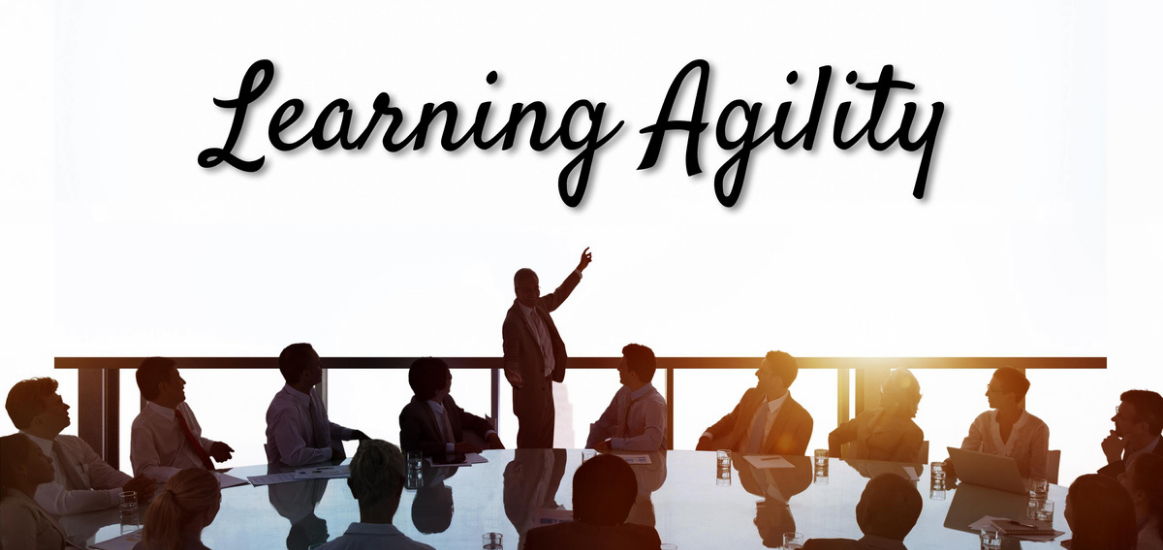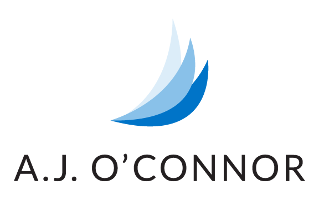
The Jury Is In: You Need Learning Agility to Thrive
In Learning Agility Revisited: Can Leaders Excel Without It? (part one of our two part update on Learning Agility), we explored the latest developments on this competency, including introducing two refined Learning Agility competency models and their accompanying Learning Agility assessments.
In this post, we’ll:
- Explore the implications for your career, for the selection and growth of high potentials and leaders, and for an organization’s capacity to thrive in today’s maelstrom of change.
- Offer strategies for organizations to up their agility level.
- Provide suggestions and tools to gauge and continually hone your Learning Agility capacity.
First, let’s look at what the current research tell us about Learning Agility and success.
Learning Agility – A Predictor of Leadership Success
Recent studies have confirmed the links between Learning Agilty, the selection and development of high potentials/leaders and executive success.
- A high level of Learning Agility was found to be a key predictor of executive leadership success in a study that also recommended strategies such as executive coaching to develop this competency. (Goebel & Baskerville, 2013)
- “Learning agility, mediated by job content on-the-job learning was found to be a better predictor of being identified as a high potential than job performance. Career variety was also found to be positively associated to learning agility.” (Dries, Vantilborgh & Pepermans, 2012)
Learning Agility and the Agile, Innovative Organization
An important correlative focus has been research on Learning Agility’s link to organizational success in what is being referred to as Organizational Agility.
- “Progressive companies who are able to seize the day to transform their learning and development organizations will not only realize accelerated skills development but also increase productivity, innovation, and competitive advantages.” (Brightspace/D2L)
- “Organizations with a strong learning culture are 92% more likely to develop innovative products or processes, 52% more productive, and 56% more likely to be the first to market with their products and services.” (Bersin by Deloitte)
- There’s a high probability of a link between learning agile executives, agile organizations, and their profitability, innovation, and competitive advantage linking specific elements of learning agility to successful business strategies. (Ryann K. Ellis, 2015)
-
Executives who are both socially flexible and learning agile are increasingly crucial to the success of companies and teams within them. (Lewis, J, Ph.D., Korn Ferry Institute, 2013)
So, the research confirms that we had better focus on developing Learning Agility in ourselves, in our employees, and even in our organizations. But, how?
Become Learning Agile – Foster Success
Clearly, organizations and employees can both benefit from becoming agile. It follows that companies must foster a culture, an environment, and a Learning and Development/HR strategy that supports the behaviors of learning agile employees. But leaders must take responsibility for their learning and career growth too. What can organizations, OD practitioners and leaders do to cultivate Learning Agility?
Build Organizational Agility
To build organizational agility:
- Examine and if necessary, redesign processes for identifying and grooming high potentials/leaders. Although performance is frequently used in organizations to identify high potential employees for promotion, research has shown that past performance is simply not a predictor of future performance. Warner Burke in a presentation at Google on Learning Agility stated that the correlation between performance and success after a promotion is 0 (zero). Instead, consider selecting for Learning Agility using a validated and reliable assessment instrument.
- Examine and take steps to remedy cultural and environmental blocks to critical factors of Learning Agility. Executives, ask yourself these questions:
- Is your organization risk-averse?
- Are employees penalized for failure in high-risk projects?
- Does your organization have a formalized after-action review process to enable rapid learning from successful actions and mistakes alike?
- Do employees have management support to volunteer for new assignments or stretch projects?
- Are mentors available to all?
- Are coaches available to facilitate change in response to feedback?
- Are employees encouraged to take advantage of just-in-time learning opportunities on the job?
Two recently published business books provide strategic and tactical steps toward creating a more agile, innovative organization:
- In her new book, “The Agility Shift“, Pamela Meyers shows business leaders “how to make the radical mindset and strategy shift necessary to create an agile, entrepreneurial organization that can innovate and thrive in complex, ever-changing contexts.” She proposes that there is much more involved than a reconfiguring of the organization chart and job descriptions. It requires relinquishing the illusion of control at the very foundation of most management training and business practice. The Agility Shift provides specific, actionable strategies and tactics for leaders at all levels of the organization to put into practice immediately to improve agility and achieve results.
- In “The Innovator’s DNA” by Jeff Dyer, Hal Gregersen, and Clayton Christensen, the authors offer additional strategies to drive innovation and to counter existing cultural and environmental barriers to Learning Agility. The book illuminates the five “Innovator’s DNA” skills:
- Associating – Connecting otherwise seemingly unrelated dots.
- Questioning – Asking the right critical questions: “What is?” “What if?” “Why?” “Why not?” and “What caused?
- Observing – Practicing actively observing operations of clients, vendors, and internal customers to uncover unmet needs, hurdles, and processes.
- Networking – Tapping into new ideas from people with diverse perspectives.
- Experimenting – Generating new business ideas and piloting to quick breakthroughs.
You can learn more in this Harvard Business Review book review.
Do you want a quick way to self-assess the current state of agility in your organization and your own current organizational context? Check out Dr. Meyer’s Agility Shift Inventory.
Cultivate Your Own Learning Agility
How can you cultivate your own Learning Agility? Two recent Harvard Business Review articles (referenced below) suggest the following:
- Work with a coach who can help you recognize and alter ineffective behaviors and learn new ones.
- Ask for and act on feedback. Own your own stuff, change what you need to and cultivate what you want to maintain and grow.
- Seek new solutions to problems. Ask yourself, “What else? What have I not tried? How else could I approach this?”
- Look for patterns in complex situations, even those that seem unrelated.
- Engage in “counterfactual thinking” exploring the “what if’s” in any situation.
- Seek stretch assignments and roles in unfamiliar functional areas and geographies.
- Reflect. Practice mindful observation and openness to new experiences.
Learning Agility Is A Personal Challenge
Learning Agility is a non-negotiable competency for today’s business and career success. There undoubtedly will be many more developments in understanding and applying this competency as organizations tackle change and culture shifts brought on by generational, technological and geopolitical upheaval of our time. So, let’s not be caught short. We can all work toward becoming more change hardy, more open to experience, more receptive to feedback, more reflective, more excited and engaged by new and diverse ideas. In a nutshell, we can all learn to be Learning Agile. How will you begin?
Are you ready to take on the Learning Agility challenge to become a more successful, agile leader? Do you want to foster Learning Agility in your organization, teams, and individual employees?
Download and review AJO’s Learning Agility Coaching Guide to gauge your personal level of Learning Agility, and to get quick read suggestions for individual and team enablers, personal mastery strategies, and corporate areas for growth.
Ask us how we can help you craft and implement customized Talent Management strategies to accelerate the development of your organization’s leaders and high potentials.
Recommended Reading & Resources
- Bersin, J. “Becoming Irresistible: A New Model for Employee Engagement”, Deloitte University Press, Deloitte Development, LLC, 26 January 2016, Web
- Brightspace/D2L New World, New Work: The Changing Landscape of Employee Learning and Development ebook
- Burke, W. Learning Agility at Google. Youtube Presentation, November 2015
- Dries, N., Vantilborgh, T., & Pepermans, R. (2012). The Role of Learning Agility and Career Variety in the identification and development of high potential employees.
- Dyer, F., Gregersen, H. & Christensen, C.M. The Innovator’s DNA: Mastering the Five Skills of Disruptive Innovators
- Flaum, J. P. and Winkler, Becky, Improve Your Ability to Learn, Harvard Business Review, June 08, 2015
- Goebel, S. & Baskerville, R. Georgia State University, From Self-Discovery to Learning Agility in Senior Executives, September 20, 2013
- Lewis, J, Ph.D., Korn Ferry Institute, 2013, Leadership that Drives Profits: Management Teams with Two Pivotal Attributes are linked to 25% Higher Profit Margins.
- Meyers, P. The Agility Shift, Creating Agile and Effective Leaders, Teams and Organizations, (Bibliomotion, 2015)
- Ryann K. Ellis’s blog post for ATD, June 03, 2015, Learning Agility Prime Indicator of Business Success
- Valcour, Monique, Four Ways to Become a Better Learner, Harvard Business Review, December 31, 2015
Kathy Flora is a Career and Executive Coach and AJO Blogger who is actively pursuing her life’s passion, helping others find and fulfill theirs. Known as a positive change agent, mentor and guide, she has assisted hundreds of leaders and their teams understand their strengths, collaborate effectively, and drive organizational success. She has a special affinity for working with virtual teams, using webinars, virtual meet-ups, and online collaborative communities to optimize communication and productivity. Her experience spans over 25 years in executive management and leadership, career development, facilitation, and consulting in private firms, state government, and in federal agencies.


